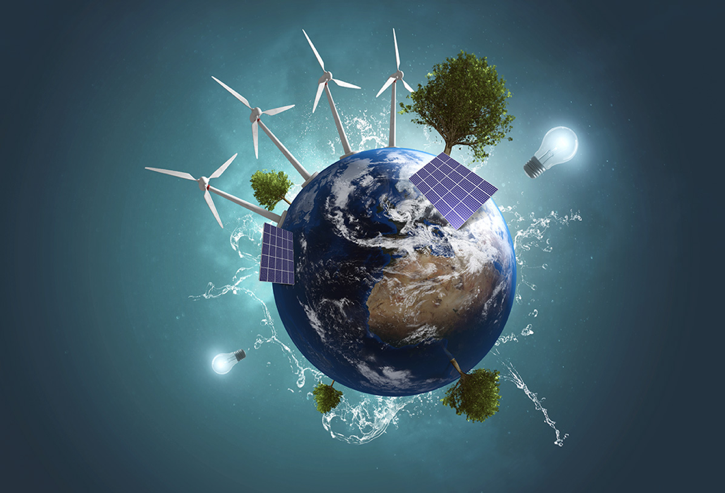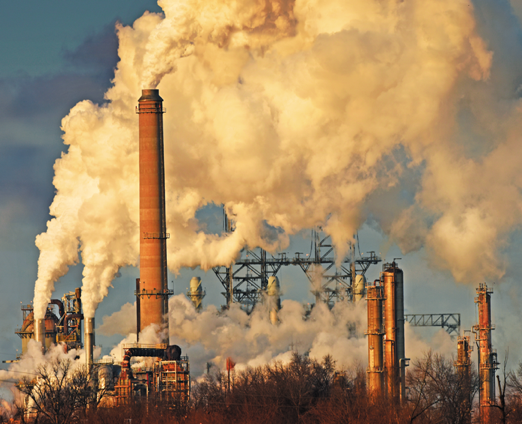What Is Energy?
The term energy comes from the Greek word energeia. This originated with Aristotle, and it has no direct translation in the English language, although it is frequently described as “being at work.” By the mid-17th century, Gottfried Wilhelm Leibniz, a prominent mathematician and natural philosopher of the Enlightenment era, developed the concept that corresponds to our current understanding of kinetic and potential mechanical energy. His ideas were later expanded to incorporate the idea that the quantity of motion of a moving object is proportional to its mass and velocity squared. These developments of our understanding of the concepts of energy, heat, and movement led scientists to formulate the basis for what we know today as the conservation of energy: that energy cannot be created nor destroyed, it can only be transformed from one form to another. The scientific discovery of the transfer of energy, and the various types of the transferal of energy, have helped us build the world as we know it today: a world dependent on various types of energy for mass production, electricity, and transportation.
The Uses of Energy: Fossil Fuels, Nuclear, and Renewable Energy
While living organisms require energy to stay alive (plants need sun, humans need food), human civilizations need energy to function. Prior to the latter half of the 18th century, windmills and watermills provided the energy needed for industry such as milling flour, sawing wood, or pumping water, and burning wood or peat provided domestic heat. Human civilization now gets its energy from resources like fossil fuels, nuclear power, and renewable energy.
Fossil Fuels – Humans have actually used coal as a source of energy for thousands of years, but it became important during the Industrial Revolution, when it was primarily used to power steam engines, heat buildings, and generate electricity. A fossil fuel is a fuel formed by natural processes, such as the anaerobic decomposition of buried dead organisms, which contain energy from ancient photosynthesis. Fossil fuels include coal, oil, and other natural gasses. The invention of the internal combustion engine and its use in automobiles and trucks greatly increased the demand for fossil fuels such as gasoline and diesel oil. Other forms of transportation, railways and aircraft, also require fossil fuels. Fossil fuels also can generate electricity.
Renewable Energy – Renewable energy is energy produced from sources that do not deplete or can be replenished within a human’s lifetime. The most common examples include wind, solar, geothermal, biomass, and hydropower. Most renewable energy is derived directly or indirectly from the sun. Sunlight can be captured directly using solar technologies. The sun’s heat drives wind, whose energy is captured with turbines. Plants also rely on the sun to grow and their stored energy can be utilized for bioenergy. Not all renewable energy sources rely on the sun. For example, geothermal energy utilizes the Earth’s internal heat, tidal energy relies on the gravitational pull of the moon, and hydropower relies on the flow of water.
Nuclear Power – Nuclear power is the use of nuclear reactions that release nuclear energy to generate heat, which most frequently is then used in steam turbines to produce electricity in a nuclear power plant. Nuclear power can be obtained from nuclear fission, nuclear decay, and nuclear fusion reactions. Presently, the majority of electricity from nuclear power is produced by nuclear fission of uranium and plutonium. Nuclear decay processes are used in niche applications such as radioisotope thermoelectric generators. The problem nuclear power presents us with is how to get rid of the radioactive waste it generates, which takes 10,000 years to break down into harmless elements.
The use of fossil fuels raises serious environmental concerns. The burning of fossil fuels produces a vast amount of carbon dioxide. When it is released into the air, CO2 absorbs the sun’s warmth and retains that heat in the atmosphere. Carbon dioxide is a greenhouse gas that contributes to extreme climate change. Greenhouse gasses account for the majority of all pollutions, as well as the effects of climate change: rising temperatures, higher sea levels, abnormal weather patterns, increased natural disasters, and acid rain.
A global movement towards the generation of low-carbon renewable energy is underway to help reduce global greenhouse gas emissions.
Here’s What You Can Do To Conserve Energy:
- Adjust day to day behaviors: turn off your lights, air dry your clothes, adjust/program your thermostat
- Replace your traditional incandescent bulbs with halogen incandescent, compact fluorescent, or LED bulbs
- Use a smart power strip, which is designed to monitor and control power to each electrical outlet in the strip to improve energy efficiency and prevent household electronics from wasting power
- Purchase energy efficient appliances — you will know an appliance is energy efficient because it will display the Energy Star Label
- Reduce your heating expenses: use less hot water or insulate your water heater
- Install energy efficient windows; replace your single pane windows with double pane
- Weatherize your home by sealing air leaks in your vents, windows, and doors
- Insulate your home
What is Corefficient Doing to Conserve Energy?
At Corefficient, we value the environment, and as a leader in the energy-efficient transformer core industry, we are committed to the conservation of energy and protecting the future from environmental degradation.
A successful business thrives on challenge, and the challenge of conservation has led Corefficient to innovate green transformer cores.
Our understanding of the current environmental challenge has allowed us to grow in a direction of efficiency and minimization of energy losses during electrical transferal with energy efficient cores.
- Reduce energy loss in transformer cores – Corefficient builds green, electrical transformer cores that improve efficiency while reducing costs.
- Testing – In order to create higher efficiency cores, Corefficient tests its materials during every stage of the manufacturing process. From the moment they enter the plants as raw material, to their final stages in becoming DG wound cores, Corefficient tests material for magnetic flux, permeability, surface insulation resistance, and consistent widths and thicknesses.
- Quality control – Corefficient has quality control laboratories within the production plants, resulting in higher efficiency materials, the implementation of thinner or domain-refined materials, and an improved cooling medium which minimizes energy loss.
All electricity must go through transformers, and the best way to reduce transformer energy loss is to choose the right energy efficient core. We conserve – by manufacturing energy-efficient transformer cores and making wise decisions when it comes to infrastructure, such as making sure the companies that manufacture the products in our energy grid care about our environment.
More About Corefficient
Corefficient’s state-of-the-art facility based out of Monterrey, Mexico is a transformer core company committed to adding value to their transformer core products. Combining experience and success in the fields of transformer core engineering, transformer core design, magnetic core expertise, hot and cold rolled steel, grain-oriented steel, electrical steel, and – most importantly – customer service. Contact Corefficient’s sales engineer today at: 1 (704) 236-2510.




